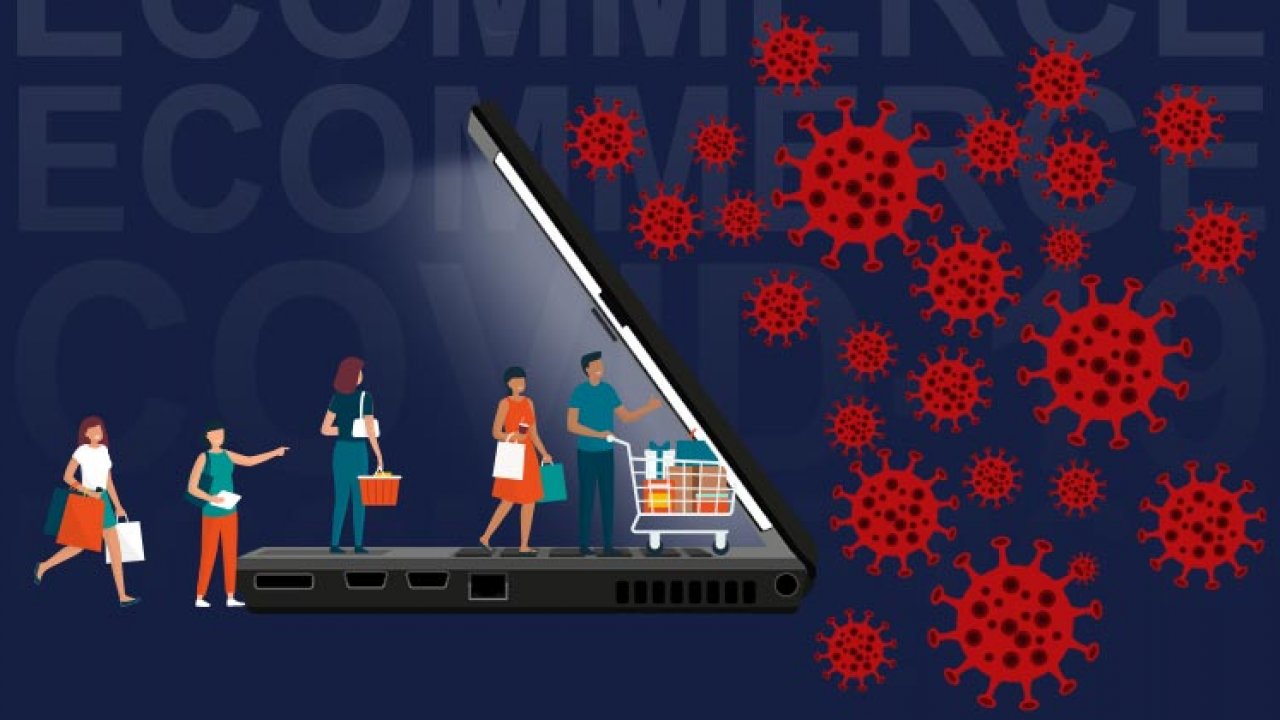|
It was a year-and-change ago that we first addressed the good news/bad news narrative ecommerce merchants were facing after a global pandemic kneecapped economic and public health concerns around the world. That was a seismic shock on a number of levels, but as business and life needed to go on, we explored strategies for preserving investments and even making the most of a new captive audience of shoppers forced to buy online. Fast-forward to this point, more than halfway into 2021, and we are still here. After a brief period of “reopening” after a vaccination purported to liberate us from isolation, a resurgent Covid-19 wave has yet again imperiled virtually every aspect of our lives. How did your store fare during the initial lengthy duration? Did you thrive or struggle? Whatever is your story, it’s about to again face challenges. But the shift toward online buying has paved the way for a potential continuation of opportunity. Lockdowns hitting physical retail establishments last year bumped up the statistics for ecommerce merchants worldwide, but not by a significant margin – at first. Eventually, those numbers increased, reflecting comfort among consumers who grew familiar with and appreciative of the convenience of buying online. Averages being averages, not everyone fared the same. The Latin American marketplace Mercado Libre doubled its daily sales between the second quarter of 2020 and the same period of 2019. Coronavirus, not a friend to anyone, did boost sales in the US for ecommerce merchants. Year-to-year sales increased just over 32 percent at the height of the lockdown. Perhaps Americans were more motivated than anyone to shift their shopping venues. Not all good news Though a general trend sent consumers to their computers and phones in record numbers, that did not translate to a universal benefit for all sellers. The reason will resonate as obvious: averages are driven by big players, and all in all, the existing ecommerce giants such as Amazon and Walmart saw the most gigantic hikes. In other words, either those who had experience with established online sellers were more likely to go to them for all or most purchases, or shoppers who were new to the game decided to trust the marquee merchants over smaller entities. “Digital divides” played a role in this; online infrastructure was prepared to deliver, so to speak. Mid- to small-level sellers had a lot of catching up to do. And for some it never really materialized. That said, this continued global struggle with a pathogen that doesn’t seem likely to go away presents a renewed opportunity to seize on what is already existing in everyone’s business model, provided they made early efforts to transition. An important factor for sellers around the world is the role governments play in facilitating access and relaxing regulations. Convincing elected officials that economic fitness, including critical levels of tax revenues essential for day-to-day operations, is a primary goal, is paramount. Most understand but may lack the willingness to invest at a time when budgets are shrinking. Economists understand this is the opposite of good economic policy. An organized effort to convince them otherwise could make an extraordinary difference that benefits all.
0 Comments
There’s no place like home. The infamous line out of an iconic film tugs on emotional heart strings, but its practicality is inescapable. Perhaps no time in modern history have so many people around the world been reacquainted with the importance of establishing a livable, enjoyable home space as they are now doing more than a year after a global pandemic halted both outside and inside public activities. The transition from a frightening experience in early 2020, when exterior areas that once bustled with activity were practically ghost towns, to a new hope for reopening, has been gradual and welcomed. That said, few expected the various lockdown mandates to last this long. Coping has been a struggle, between setting up remote workspaces, keeping kids entertained between online learning, and just generally curbing options for pursuits such as shopping. But something else happened along the way. Consumers increased the already growing rate of online shopping – not just for staples, but for infrastructural home goods aimed at turning a living space into a pleasant permanent shelter. This was an unanticipated boost for merchants peddling related items. And the news gets better: estimates say up to 40 percent of customers who rarely bought online are now seriously considering it as a way of life. Whether it’s textiles, décor, furniture, hardware, or anything else in the home goods category, shoppers have found the silver lining in COVID-19’s dark cloud by skipping annoying trips around town, in search of the right item. Spending so much time indoors has drawn attention to the living experience people want to enjoy, and this is a golden opportunity for online retailers of home-centered merchandise. Home goods retailer Bed Bath & Beyond, for example, reported a rare uptick in 2020 sales, despite four consecutive prior years of losses. Their digital sales increased 80 percent. That’s gargantuan, and inspiring. Your online business may not be in the league of a BB&B or a Lowe’s, Target, or other big-time entities. But you have a product to offer, and if you pay attention to strategy, you may reap the benefits of this mass conversion to digital commerce in the home goods sector. It’s critical to strike now, while the proverbial iron is hot. Large-scale job losses have spurred government unemployment spending, including decent-sized federal subsidies. Those are slated to end in August, but they already have been extended twice. What happens next is anyone’s guess. Your job today is to meet the needs of shoppers with capital. The lesson here is to learn how to reach this new brand of consumer. Use the standard strategies of strong marketing, updated product inventory, catchy advertising, and fiscal health checkups to be sure your mechanics are in place. Tailor your advertising (and all communications) to those who have reevaluated the state of their home centers, and pitch with provocative language geared toward making permanent the current focus on home sweet home. For inspiration and ideas on how to make your online store work for you, hit up Shopify. They’re always good for fresh, motivating content. The Year ‘Viral’ Gained New MeaningRounding the corner into the second year of a near-complete disruption in every facet of life, the COVID-19 virus is still on pace to wreak havoc. Nary an element of public and private interests has been shaken to the core, with forced quarantines and stay-at-home orders, business closures, pared down access to essential services, and education interruptions. The good news is a recent release of long-awaited vaccines that experts say will begin to slow the spread in a significant way. The not-so-good news seems to reflect resistance among a substantive number of skeptics who, for one reason or another, may not partake. Overall, we are heading in a good direction. And if you are engaged in online commerce, you should feel relieved to discover that the uptick in ecommerce business that began last year is likely to continue. Some smaller entities experienced a noticeable increase in sales, while major retailers and top brands grew exponentially. Market analysts believe the ecommerce industry is the most prolific beneficiary of the COVID-19 debacle, with penetration rates exploding from their current level of 15 percent to 25 percent by 2025. This did not happen in a vacuum. As consumer habits and preferences have evolved over time, many have enjoyed the convenience of digital shopping. Not only has online commerce become more and more popular, but using a device to find and purchase goods has become one of the most popular activities conducted online. Ecommerce sales are projected to grow from $1.3 trillion in 2014 to $4.5 trillion in 2021. This increase can only be considered revolutionary. Depending on your perspective, 2020 may be the most disastrous year to be in business, or it may be the best year ever to have launched an ecommerce store. Analysts include cyber-selling as one of countless sectors disrupted immeasurably by one of the worst global pandemics in world history—and certainly in the United States.
While life and health represent the primary collateral damage of Covid-19, it’s harder to escape the tie-in between economics and well-being. As states began to implement closures of non-essential businesses, economic figures from the stock markets to GDP reflected a devastating side effect. A fascinating byproduct of that was a shifting of commerce from in-person to home-based, creating the kind of climate making ecommerce businesses naturally flourish. And they have. Coinciding with a general transition to convenient online shopping, the Novel Coronavirus looks to be a windfall for the most prolific digital seller–Amazon–with niche entities following on their heels. For its share, Amazon’s net revenues by in the second quarter of 2020 soared to a dizzying $89.1 billion. With the holiday shopping season approaching, that number could double for the third and fourth quarters. As goes Amazon, so goes the rest of digital commerce. Second-quarter retail e-commerce sales in the U.S. climbed by almost a third from the previous quarter, to just over $211 billion. Lost packages. Late packages. Packages lingering in an unknown location within a postal facility. Welcome to ecommerce in 2020.
At a time when a global pandemic shutting down in-person commerce all over the country and even the world, one might think this is a golden opportunity for merchants conducting business online. And it is. With one exception. Logistical wrangling related to a shakeup at the United States Postal Service have intervened to present a full-scale nightmare scenario for consumers, direct mail marketers, and especially ecommerce vendors of all sizes hoping to get essential and non-essential goods to customers in a better-than-timely manner. In the early stages of the Covid-19 pandemic, delays were anticipated and experienced, but those leveled out as the USPS stepped up. With the installation of a new Postmaster General in June, the directive is clear: cut costs and increase efficiency, even at the expense of a desperate public. The seismic shift has left analysts, public officials, and especially online shoppers scratching their heads. A provision in the US Constitution sets forth a postal service to be established and monitored by Congress. Its purpose back in the day was to transmit important correspondence from Point A to Point B at a time when planes, trains, and automobiles were more than a century away from reality. After jockeying for the top spot as a favored shipping service, the USPS competed with UPS, DHL, and FedEx to curry favor. Enter ecommerce giant Amazon, the most prolific internet seller, and the picture changes with a contractual agreement. USPS is the most heavily used service for Amazon and other sellers of all sizes. Even its competitors use USPS for rural deliveries. Now its very future is in question. As we continue to face unknowns and unfathomables in this era of Covid-19, the need to stay focused on recovery for both patients and businesses becomes critical. The devastating impact on people’s lives and health are indisputable. But the toll on economies, and businesses, is also the basis for crisis management strategies.
If there is a silver lining for ecommerce merchants struggling to survive 2020, it’s a surprising increase in potential customers from a demographic they thought was unreachable: Boomers. Older consumers are understandably less comfortable with conducting financial transactions online, but that has changed rapidly over the last few months as shuttered retail stores and empty shelves have driven them to digital shopping. Will it last? No one knows. Some industry analysts believe that as storefronts begin to reopen, older shoppers will abandon the idea of buying over the internet. Yet others think there is an opportunity for ecommerce vendors to capture a decent share of this market – if they play their cards right. It’s interesting to note that nearly 75 percent of online shoppers have shown a willingness to try out new venues during the Covid era. That demonstrates an active desire to explore the benefits of remote purchasing, and it could benefit your business. Among consumers surveyed, 76 percent of those over age 55 say they would try a new brand or venue if they were to be enticed with an online coupon or discount. Almost four months into a global pandemic that has thrown much of the world off its proverbial axis, virtually every facet of our lives is still chaotic, in question, and fraying nerves as we look to an uncertain future. The glass-half-full perspective on how Covid-19 has shifted our focus and tested our grit shows that we are, indeed, resilient. But denying the seismic impact on economies – both micro and macro – comes close to reflecting the horrific loss of life and health seen around the world, is impossible. Our survival depends on a strong economic status.
In the United States and elsewhere, a true trickle-down model has met our dire expectations: millions of small businesses have closed permanently, thousands of larger retailers are struggling to keep up with inventory demands, and individual consumers are faced with having to make purchases on a limited income, or with sufficient funds and a lack of venues operating in the midst of a viral epidemic. No matter where your business is on the survival scale, there are ways to navigate through an unforeseen crisis that is benevolent to online sellers. Overall, analysts estimate that online sales have increased by 50 percent compared to this point in 2019. You’re already poised to take advantage of a gaggle of virtual shoppers, but the same obstacles facing brick-and-mortar retailers and large ecommerce sellers have probably upended your operations, as well. Here are some ways to adapt. If it seems as if the entire world has changed, it has. We know this. Nary a region, city, continent on Planet Earth has escaped the ravaging effects of Covid-19, now a global pandemic that has severely shifted commerce, labor, and everyday living in a social distancing environment. As commerce is the backbone of all free societies, this is a startling fact. Here’s a jaw-dropping statistic: Global Web Index found that 80 percent of consumers in the US and UK have increased their online purchasing in the wake of this pandemic. A sudden emphasis toward ecommerce is opening up markets that in the past were strictly in-person, and padding revenues for existing online sellers. It’s critical to closely examine your business model to make the best of a dire situation. With the right information, tools, attitude, and devotion, you may get through this unprecedented time. The most essential factor here is understanding consumer behaviors in the wake of closed storefronts and empty grocery shelves. How are average citizens choosing to replenish basic supplies? How are they spending mostly limited dollars on “luxury” goods, which were not so luxurious just three months ago? Commerce crashes are hitting virtually every sector of the economy and society. From entertainment to education, new purchases have all but disappeared. And in the runup to a real recession, many consumers are finding themselves out of work and unable to meet their current financial obligations for basics like utility bills, rent, and credit card payments. But not all. Some are positioned to ride out this storm with a modicum of buying power. Can you take advantage of that? Take a look at some digital marketing trends that are helping businesses stay afloat, taking advantage of the nearly captive audience of consumers stuck at home with only the internet as a source of information. It’s also their source of purchasing. Surprise! Count yourself as one of millions of ecommerce merchants who likely never anticipated the type of global disruption facing virtually every individual and every entity today. By now you and everyone you know is operating in crisis mode both personally and professionally. Your business may be your first priority, and the news there is mixed.
Since the COVID-19 virus took hold overseas, eventually making its way to the US, economic impacts have been devastating. The financial markets tumbled. Tourism is in near-halt mode. And those who sell goods and services are in a veritable desert; a Catch-22 scenario of either lacking customers or a supply chain to meet customer needs. The struggle is real, and despite criticism of unnecessary panic, an all-out shift in operations is no longer just a possibility. Running an online store during this cross-continental crisis demands creativity to mitigate inventory shortages, shipping uncertainties, and uncomfortable customer communications. Industry analyst Bruce Biegel notes that this is the first genuine global crisis experienced in high volume by the ecommerce sector. Amazon sellers are all too familiar. That company, in a panic over how to fill orders safely, has placed a temporary moratorium on third-party vendors. No word on when or if that will lift in the near future. Even giants like Microsoft and Apple Computer are sounding the alarm about significant sales drops, with Apple recently deciding to temporarily close all retail locations outside of China. |
Archives
October 2021
Categories
All
|












